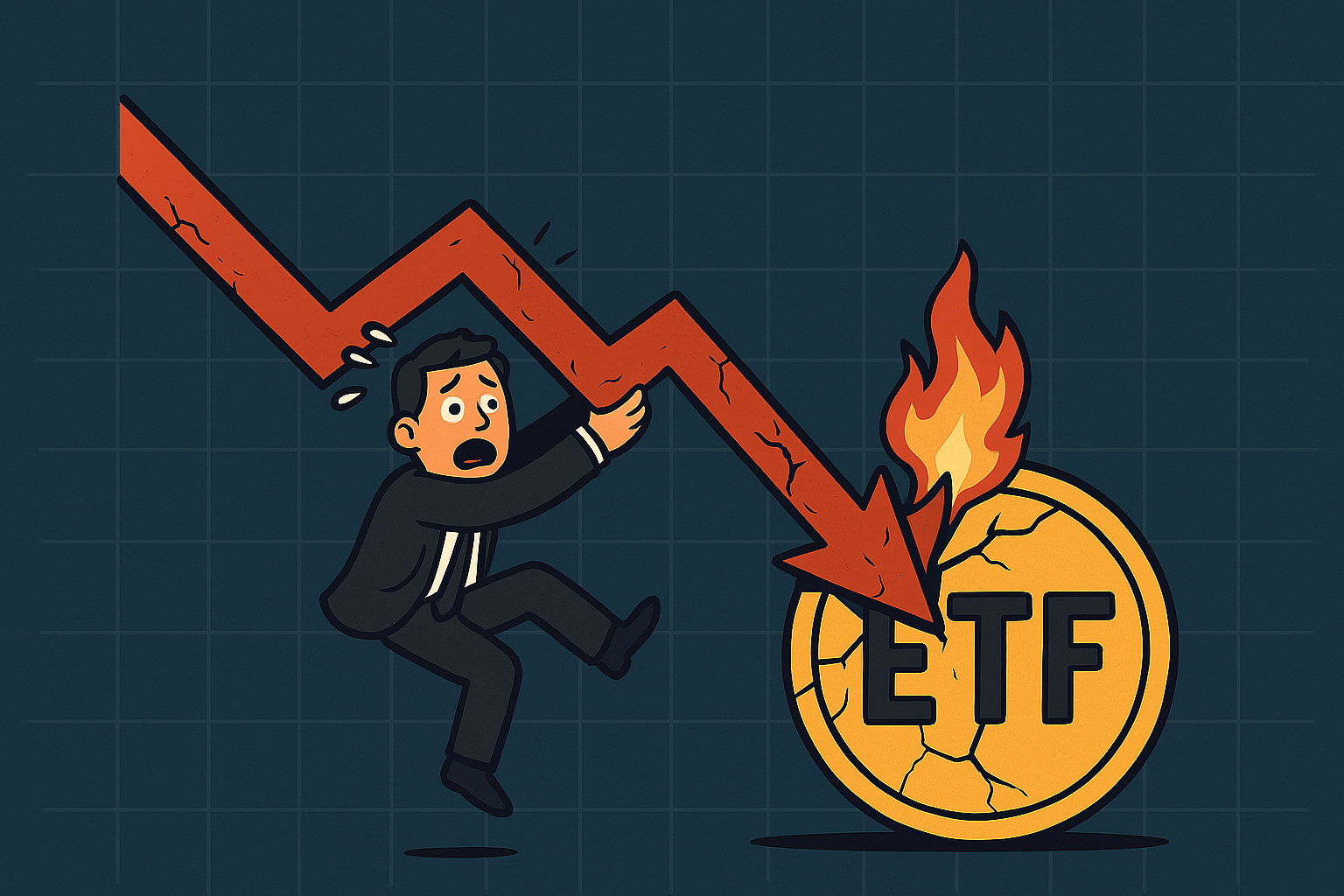The Risk of Investing in High-Yield/Income Options ETF

Options-based strategy ETFs—such as those offered by YieldMax (NYSE: MSTY, NYSE: TSLY, NYSE: NVDY, NYSE: YMAX, NYSE: YMAG) and newcomers like Bitwise’s income option ETFs (NYSE: IMST, NYSE: ICOI, NYSE: IMRA, NYSE: IGME) —have attracted attention for their eye-catching yields. But beneath the surface, these funds introduce a complex mix of risks that every investor should understand.
⚠️ Key Risks of High-Yield Options ETFs
1. Capped Upside, Full Downside Exposure
Selling call options can generate attractive income, but it means sacrificing potential gains if the underlying stock surges. Meanwhile, investors are still fully exposed to losses if the stock falls—so a bad earnings report or market downturn can quickly wipe out months of premium income.
2. Net Asset Value (NAV) Erosion
High distributions may look great on paper, but frequent payouts reduce the fund’s NAV. Over time, this “return of capital” can erode principal, especially if the underlying asset doesn’t recover.
3. Concentration Risk
Single-stock ETFs like NYSE: MSTY (MicroStrategy), NYSE: TSLY (Tesla), and NYSE: NVDY (Nvidia) magnify the risk tied to just one company. An earnings miss, regulatory issue, or major event can result in steep, sudden losses.
4. Complexity and Counterparty Risk
Options strategies—whether traditional covered calls or synthetic overlays—require skillful management. They expose investors to risks tied to option pricing, liquidity, and counterparties, especially in times of market stress.
5. Volatility Drag and Turnover
These strategies often perform best in flat or mildly bullish markets. Sudden changes in volatility or extended bull runs can cause them to underperform, while frequent trading increases transaction costs.
6. Tracking Error
Synthetic strategies, like those used by Bitwise, aim to replicate returns using derivatives rather than holding the actual stock. During volatile periods, this can result in performance drifting from the intended benchmark.
7. Distribution & Tax Complexity
Yields may be paid as a mix of option premiums, interest, and return of capital. This can complicate tax reporting and lead to uncertainty about the true sources of income.
🏦 Spotlight on Popular Funds
YieldMax ETFs
- NYSE: MSTY: Tracks MicroStrategy, heavily tied to Bitcoin volatility.
- NYSE: TSLY: Tracks Tesla, exposed to swings in the EV sector.
- NYSE: NVDY: Tracks Nvidia, vulnerable to tech sector volatility.
- NYSE: YMAX & NYSE: YMAG: Baskets of multiple single-stock strategies, offering diversification—but inheriting the same structural risks.
Bitwise Synthetic Option ETFs
- Funds like NYSE: IMST (MicroStrategy), NYSE: ICOI (Coinbase), and NYSE: IGME (GameStop) use synthetic options overlays to replicate high-yield, high-volatility exposure. They seek to generate enhanced income but face added risks from tracking error, balance sheet complexity, and counterparty exposure.
📣 Real-World Caution
Some high-yield ETFs have drawn criticism for their complexity and potential for large losses, especially in times of market turmoil. Morningstar has flagged certain options ETFs for “massive downside risk,” and new synthetic strategies remain untested in a major market downturn.
✅ Who Are These ETFs For?
High-yield options ETFs may suit investors:
- Seeking monthly income and willing to accept capped upside
- Comfortable with high volatility and possible principal erosion
- Ready to understand the nuances of derivatives and tax implications
But they are not ideal for:
- Investors seeking long-term capital appreciation
- Those wanting simplicity or lower risk
- Conservative or retirement-focused portfolios
🔑 Key Takeaways
- Know what drives the yield—is it sustainable, or mainly return of capital?
- Diversify—don’t rely too heavily on any single strategy or issuer.
- Understand the mechanics—synthetic structures and option overlays add layers of complexity and risk.
- Consider professional advice if these products are new to you.
Options-based ETFs like those from YieldMax and Bitwise offer tempting income, but the risks are real, multi-layered, and sometimes hidden. Caution, research, and careful portfolio sizing are essential for any investor exploring this rapidly growing corner of the ETF market.
More News
View More




Recent Quotes
View More
Quotes delayed at least 20 minutes.
By accessing this page, you agree to the Privacy Policy and Terms Of Service.